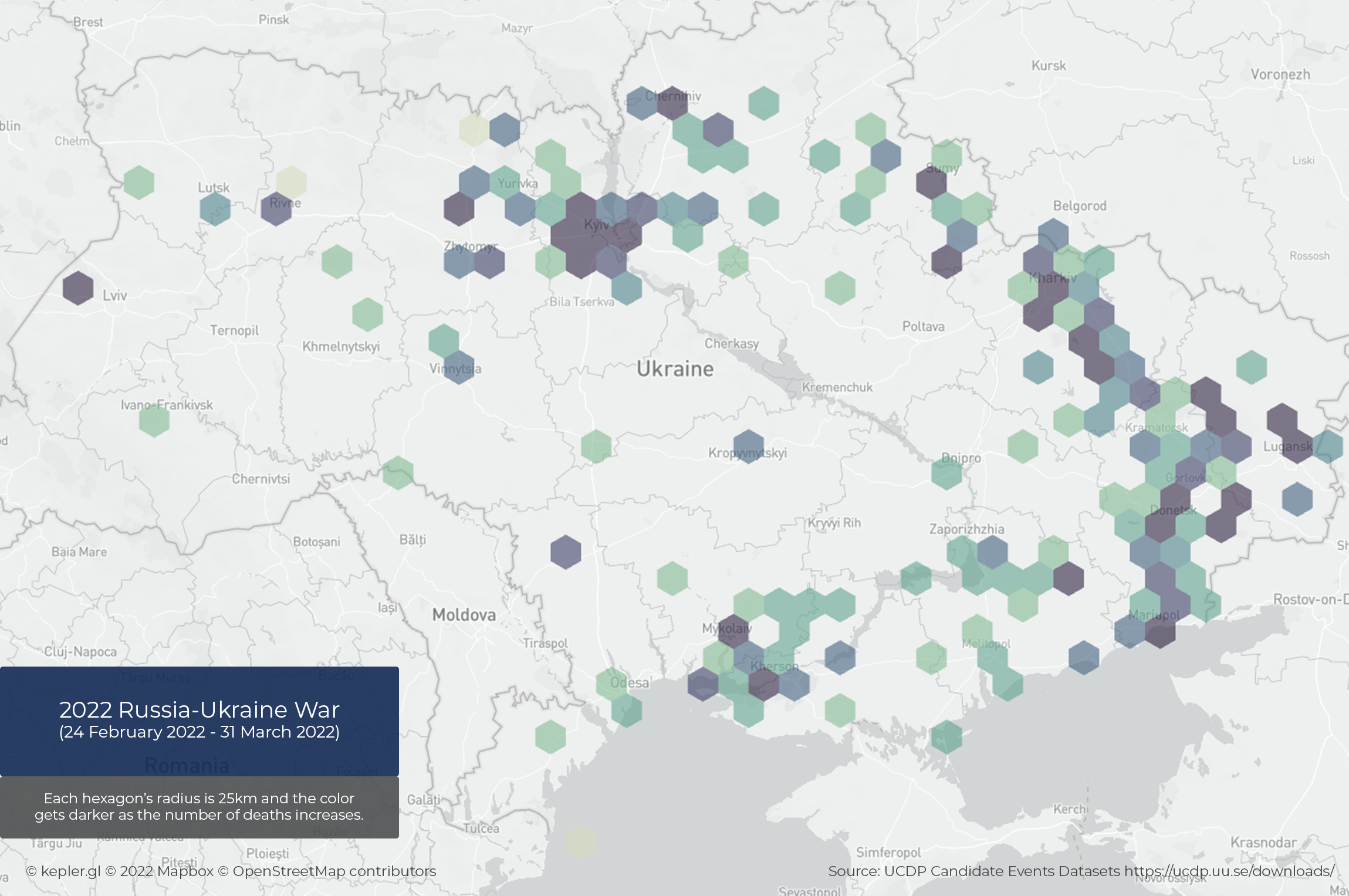|
UCDP Newsletter #2 |
RUSSIAN INVASION OF UKRAINE |
Fighting continues in the eastern Ukraine |
Director's Note |
|
Welcome to the Uppsala Conflict Data Program (UCDP) Newsletter!
In this issue we highlight the Russian invasion of Ukraine, a conflict that has already has registered the highest number of battle deaths in interstate war since the war in Iraq 2003. The massive destruction of Ukrainian cities again illustrates the enormous force and brutality that can be unleashed by major power armies. It is not yet possible to give a full account of the loss of life among civilians, but the sheer destruction wrought on Ukrainian society and the massacres of civilians discovered in Bucha and elsewhere suggest the death toll is high.
Underlying all of the monthly updates, as well as the maps and graphs provided in the Newsletter is the UCDP Candidate Events Dataset which is updated on a monthly cycle.
Please feel free to contact us via ucdp@pcr.uu.se if you have any questions, suggestions, or comments.
Magnus Öberg UCDP Director |
|
Trends in Organized Violence |
|
March 2022 |
|
The war in Ukraine continued in March 2022 with a drastic increase in the number of civilian fatalities due to the state-based conflict. Particularly Mariupol suffered a lot due to heavy bombardment by the Russian forces. More on this development below.
While the trends in Europe dominated the figures on the battle-related deaths, elsewhere in the world we also noted an upward trend in Africa and the Americas when compared to February. Meanwhile, the intensity of organized violence in Asia remained at a similar level.
The five conflicts driving the trends in state-based violence in March were Russia – Ukraine, Ukraine: Novorossiya, Mali: Government, Yemen: Government, and Burkina Faso: Government.
Similar to the situation in February 2022, the non-state violence in March 2022 was dominated by organized attacks in Mexico, primarily the clashes between the Jalisco Cartel New Generation and various other groups.
DR Congo was substantially affected by one-sided violence attributed to primarily IS and URDPC in March 2022. A number of rebel groups operating in the country deliberately targeted and killed almost 300 civilians. One-sided violence by the Russian forces in Ukraine should also be noted. Meanwhile IS’ one-sided attacks in DR Congo, Mali and Mozambique caused nearly 250 fatalities. |
|
Source: UCDP Candidate 22.0.3 |
|
Russia's war on Ukraine continues |
|
Shawn Davies, Uppsala Conflict Data Program |
|
The war in Ukraine entered a new phase as the Russian army withdrew from northern Ukraine on 2-3 April. The move meant the abandonment of the costly Kyiv offensive, which as of mid-March had cost the Russian forces at least 2500 deaths, according to reports from Belorussian morgues. Russian forces have since been redeploying to the southeast, indicating that Russia has, at least momentarily, abandoned its ambition to remove the government of Ukraine with force.
The withdrawal resulted in two weeks of relative calm in the fighting, even as the news focused on the discovery of the atrocities in Bucha, as Russian forces were redeployed to the Donbass frontline. A new Russian offensive started on 18 April along a massive front in eastern Ukraine. Its effort has thus far only resulted in some minor Russian advances, as many of the attacks have been launched upon heavily fortified Ukrainian positions, garrisoned by some of their best troops. In the first phase of the war Russia clearly intended to bypass these defenses, but with their tactical options narrowing they appear to be preparing to brute force their way through Ukraine’s best defended space.
The conflict had claimed at least 2300 civilian lives as of the end of March, excluding those in Mariupol. Mariupol has suffered under heavy bombardment, and estimates speak of upwards 10000 civilian fatalities, though any concrete numbers have proven impossible to verify as of yet. The city is now mostly under Russian control, with static Ukrainian defenses limited to the Azovstal area.
Military deaths during the war have been subject to extensive propaganda and misinformation. Caution is therefore highly advised. Confirmed military deaths up until mid-March exceed 5000, though are likely considerably higher. |
|
Updated on 25 April 2022 |
|
The Uppsala Conflict Data Program (UCDP) is the world’s main provider of data on organized violence and the oldest ongoing data collection project for civil war, with a history of almost 40 years. Its definition of armed conflict has become the global standard of how conflicts are systematically defined and studied. |
|
UCDP Uppsala Conflict Data Program ucdp.uu.se |


